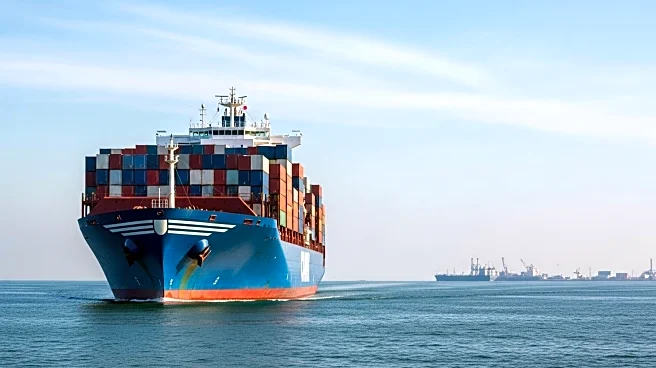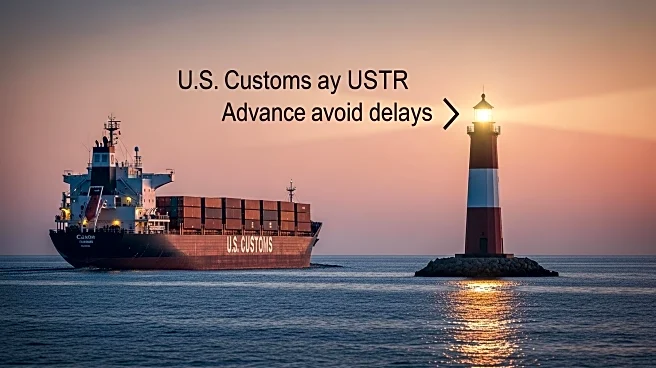What's Happening?
The Office of the United States Trade Representative (USTR) is set to implement new fees targeting Chinese dominance in the maritime sector starting October 14, 2025. These fees could affect 35% of ships in the bulk, crude tanker, product tanker, and container fleet when they call at U.S. ports. Despite these ships providing 44% of the fleet's capacity, Niels Rasmussen, Chief Shipping Analyst at BIMCO, suggests that U.S. importers and exporters should not anticipate increased freight rates. The fees will primarily impact ships that are either Chinese-owned or operated, with 70% falling into this category, while 30% are built in China. However, many Chinese-built ships are exempt due to their size or U.S. ownership. Bulk carriers are particularly vulnerable, with 45% potentially subject to the fees, whereas crude tanker and container ships face a 30% exposure, and product tankers 19%.
Why It's Important?
The introduction of USTR fees is significant as it targets a substantial portion of the maritime fleet, potentially altering the dynamics of U.S. trade logistics. While the fees aim to reduce Chinese influence, the global impact may be limited given the U.S. market's relatively small share of global ship demand. The fees could lead to a shift in shipping patterns, with affected ships possibly redeploying away from U.S. trades. However, major liner operators, including COSCO Shipping Lines, have committed to maintaining competitive rates, suggesting that freight rate increases may be avoided. This development is crucial for U.S. businesses relying on maritime imports and exports, as it could influence shipping costs and logistics strategies.
What's Next?
As the fees come into effect, the maritime industry may see a reshuffling of ship deployments to minimize exposure to USTR fees. Operators might adjust their routes or redeploy ships to non-U.S. trades to maintain competitiveness. The commitment from major operators to avoid rate increases suggests a stable outlook for freight costs, although short-term confusion during implementation could lead to temporary rate fluctuations. Stakeholders will closely monitor the situation to assess the long-term impact on shipping logistics and costs.
Beyond the Headlines
The USTR fees highlight broader geopolitical tensions between the U.S. and China, reflecting ongoing efforts to curb Chinese influence in critical sectors. This move could prompt discussions on trade policy and its implications for international relations. Additionally, the maritime sector may need to adapt to new regulatory landscapes, potentially influencing future shipbuilding and ownership decisions.











